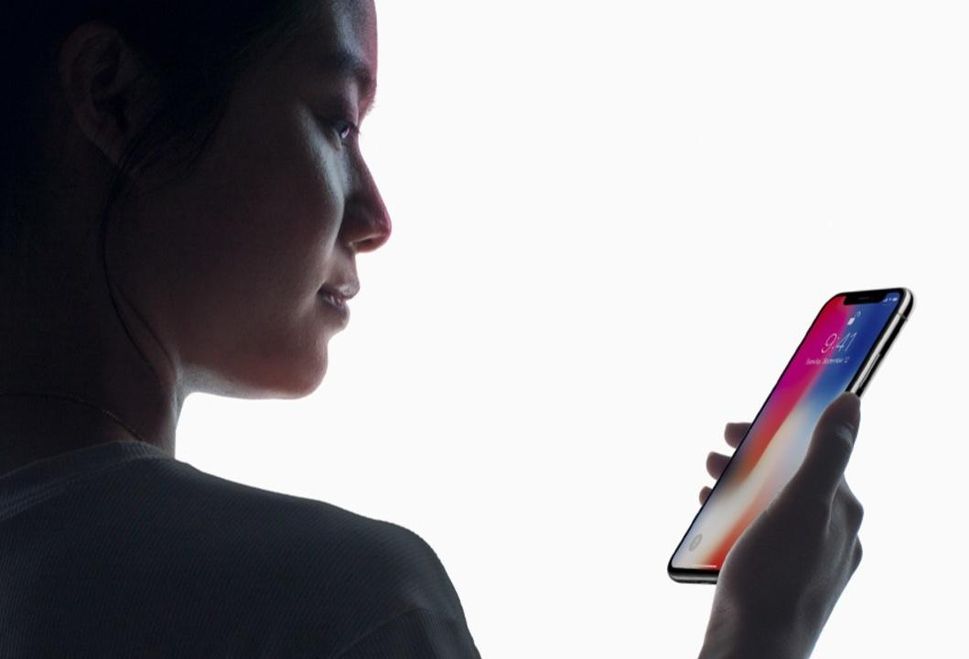Yesterday, during the Apple event in the recently opened Steve Jobs Theatre, the release of the iPhone X was announced. Apple claims the iPhone X will be Apple’s best phone ever, including new features such as a display filling the entire screen, improved cameras, and a glass screen promised to be stronger than ever. However, there is one feature especially innovative. Apple decided to equip its newest phone with face recognition technology helping you to unlock the phone (Apple, 2017).
The system is meant to replace the previously used Touch ID in which you would have to scan your finger in order to unlock your phone. The newest Face ID system allows you to unlock your phone by simply looking at it. The system will project over 30.000 invisible infrared dots onto your face once looking at it, by using the infrared camera equipped on the front end of the phone. Those dots will then be pushed through a neural network in order to set up a mathematical model of your face. At every look to the phone the dots will be compared to the mathematical model created in order to see if there is a match, leading to the unlocking of the phone (Betters, 2017).
After the introduction of this new system onto a relatively mainstream product like the Iphone, the question is, will this be the start of a much more widespread application of face recognition technology? But, Apple is not the only company using face recognition technology. For example, recently, the British police also started a pilot using face recognition technology. In this pilot, the British police was able to compare videos made on the street, using intelligent camera’s, to images stored in a database (McGoogan, 2017).
According to Apple, the possibilities are endless. For Instance, they also introduced the use of the face ID together with Apple Pay, an application used to pay using your iPhone. But, of course, there are numerous people afraid of the privacy issues connected to the widespread use of this advanced technology (Garvie, 2017). So, what do you think? Will this be the start of the extensive application of face recognition technology, or did Apple just make a big mistake?
References:
- Apple, (2017, September 13). Apple X. Retrieved from https://www.apple.com/iphone-x/
- Betters, E. (2017, September 13). What is Apple Face ID and how does it work? Retrieved from http://www.pocket-lint.com/news/142207-what-is-apple-face-id-and-how-does-it-work
- Garvie, C. (2017, September 13). Facial recognition is here. The iPhone X is just the beginning. Retrieved from https://www.theguardian.com/commentisfree/2017/sep/13/facial-recognition-iphone-x-privacy#img-1
- McGoogan, C. (2017, June 7). British Police arrest suspect spotted with facial recognition technology. Retrieved from http://www.telegraph.co.uk/technology/2017/06/07/british-police-arrest-suspect-spotted-facial-recognition-technology/


While I’m also curious to see to what extent Apple will integrate Face ID into its existing ecosystem, I would disagree with the statement that this is Apple’s big innovation. Several models of phones and laptops have been able to use face recognition to unlock the device. However, Apple is probably going to do it better than those earlier devices, and take it further than previously thought possible.
Hi Roelof, thanks for the article. I was wondering to what extent this technology will impact our everyday life and privacy. As pointed out by Al Franken and Edward Snowden, this technology can simply be abused, especially as it becomes widely adopted there will be complete surveillance. Apple itself could use the data to benefit other sectors of its business, sell it to third parties for surveillance purposes, or receive law enforcement requests to access it facial recognition system. Online advertising companies already monitor whether displayed ads actually appear on a person’s computer screen, and data generated by the front-camera of the iPhone X sensors could feasibly take it to the next level, tracking eye movement and facial expressions of people while interact with apps on their phones. What do you think about this?
Source: http://money.cnn.com/2017/09/14/technology/al-franken-iphone-x-face-id/index.html